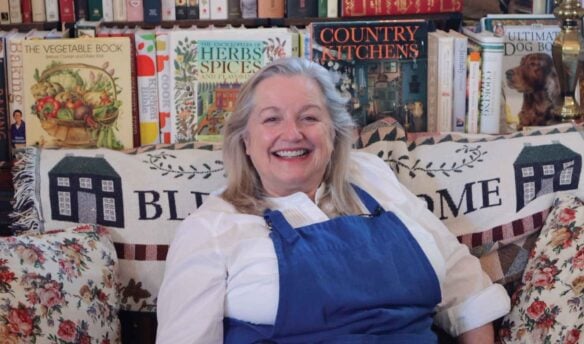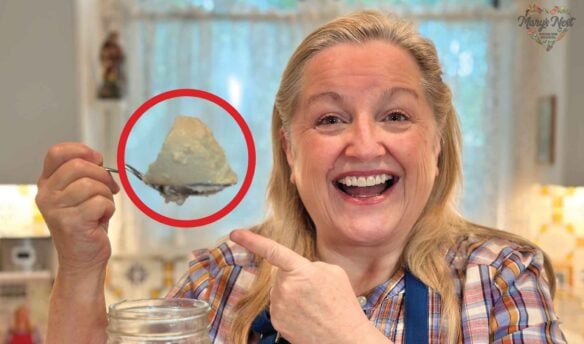I am thrilled with the comments I’ve received on my How to Make L. Reuteri Cultured Dairy videos, or what we like to call Super Yogurt! And today, I am answering your questions on how to perfect the process of making this cultured dairy to create the thickest and creamiest Super Yogurt you have ever had.
Affiliates note: As an Amazon Associate I earn from qualifying purchases. My content may contain affiliate links to products and services. If you click through and make a purchase, I’ll receive a small commission. It does not affect the price you pay.
Table of Contents
- What is L. Reuteri Cultured Dairy?
- Learn to Make Your Own L. Reuteri Super Yogurt
- How Did L. Retueri Become Popular?
- What is the Best Dairy to Use to Make L. Reuteri Cultured Dairy?
- What is Half and Half?
- Can L. Reuteri Cultured Dairy be Made with Low-Fat or Fat-Free Milk?
- Must L. Reuteri Super Yogurt Always be Cultured at 100°F (38°C)?
- Do You Need L. Reuteri Tablets to Make Every Batch of Cultured Dairy?
- What is Inulin and Do You Always Need It When Making L. Reuteri Cultured Dairy?
- Does L. Reuteri Always Need to Be Cultured for 36 Hours?
- Why Did My First Batch of L. Reuteri Cultured Diary Curdle?
- How Are the Second and Subsequent Batches of L. Reuteri Cultured Dairy Made?
- Can You Freeze L. Reuteri Cultured Dairy?
- How Long Will L. Reuteri Cultured Dairy Last Once Refrigerated?
- How Much L. Reuteri Cultured Dairy Should You Eat Every Day?
- More L. Reuteri Questions?
- Disclaimer
- The Modern Pioneer Pantry
- Cultures for Health
- Download Your Free 36-Page Pantry List
- The Modern Pioneer Cookbook
- Join the Traditional Foods Kitchen Academy
- Kitchen Academy Videos
- Shop for items used in this blog post or video
What is L. Reuteri Cultured Dairy?
You might be wondering why I refer to this recipe as L. reuteri “cultured dairy” and not L. reuteri “yogurt.” Although this cultured diary is indistinguishable from yogurt, it can’t technically be called yogurt, at least not here in the United States.
For a cultured dairy product to be called yogurt, the US Food and Drug Administration (FDA) requires that it must contain two specific strains of good bacteria:
- Lactobacillus bulgaricus
- Streptococcus thermophilus

But in our traditional foods kitchens, we lovingly refer to our Limosilactobacillus reuteri or L. reuteri as Super Yogurt! And no one can stop us. 😉
More important than any of the official jargon that surrounds this cultured dairy is the fact that Super Yogurt is so abundant in gut-loving good bacteria it can’t be beat. It’s rich, creamy, and thicker than Greek yogurt without the need to strain it. Plus, best of all, it’s tasty too!
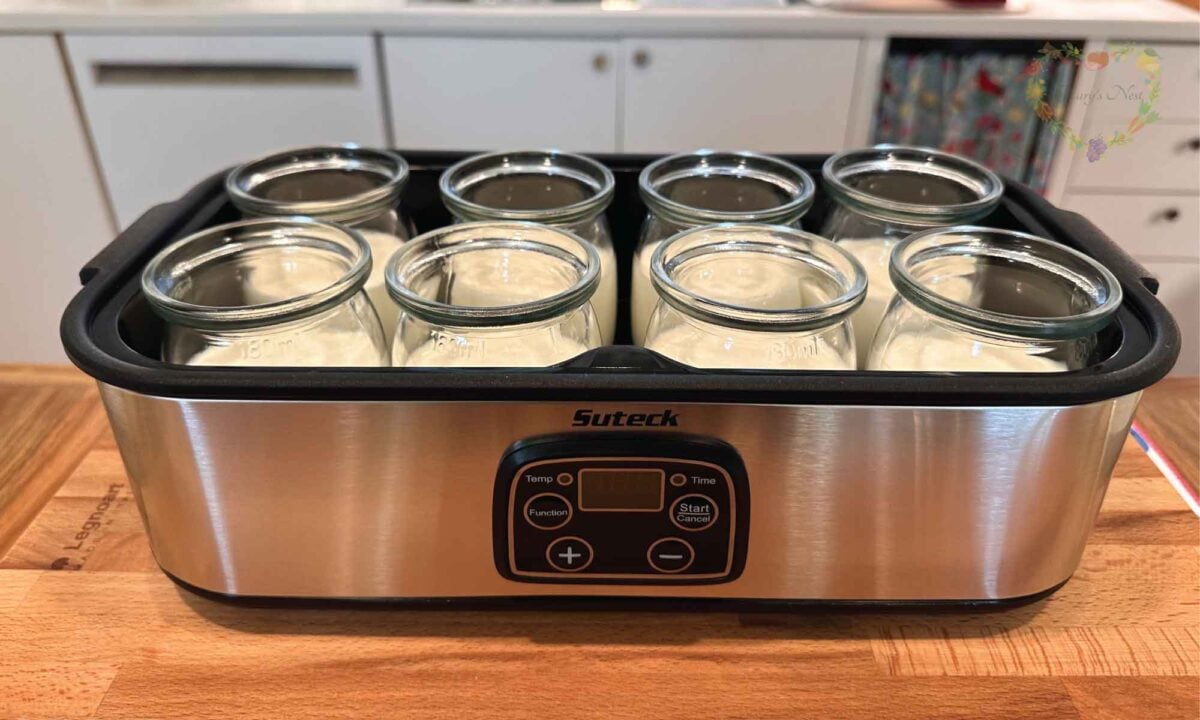
Learn to Make Your Own L. Reuteri Super Yogurt
To begin with, if you have not yet had a chance to make this L. Reuteri Super Yogurt, it’s easy to do. And I show you how to make it in a yogurt maker and an Instant Pot. However, if you can maintain the temperature of 100°F (38°C) in your oven, you can use that too!
- How to Make Super Cultured Dairy with L. Reuteri (Yogurt Maker)
- How to Make Super Cultured Dairy with L. Reuteri (Instant Pot)
OK, now it’s time to get to all your questions and answer each one of them!
How Did L. Retueri Become Popular?
To understand the history of L. Reuteri, you need to read one of my recent favorite books (well, my favorite after my new cookbook! 😉). The book I am speaking of is Super Gut by Dr. William Davis.
In his book, Dr. Davis discusses his study of good bacteria—what we also call probiotics—and how modern humans have lost a significant amount of good bacteria from our digestive systems. This is a serious problem because good bacteria is responsible for so many health-giving processes in our bodies.
Specifically, Dr. Davis discovered that modern humans are significantly low on a particular type of good bacteria known as, you guessed it, L. Reuteri! This good bacteria is involved in the process of creating the hormone oxytocin in our bodies, which some have nicknamed the love or cuddle hormone. Oxytocin* makes us loving, kind, and empathetic. Might our world be a bit harsher these days because we are low on L. Reuteri? It’s an interesting hypothesis!
But in addition to helping our bodies create more oxytocin, L. Reuteri is also involved in helping us to sleep better, lose weight, and reduce skin wrinkles. No wonder we have nicknamed it super yogurt! 😊
*Note: Dr. Davis does not recommend that pregnant women eat L. Reuteri cultured dairy because the oxytocin levels could induce labor. In his book, he shares alternative forms of cultured dairy that are suitable for pregnant women.
What is the Best Dairy to Use to Make L. Reuteri Cultured Dairy?
Generally, it’s best to make L. Reuteri cultured diary using ultra-pasteurized half and half. We want the other good bacteria in milk to be killed off so that the L. Reuteri can have a fighting chance to proliferate and create Super Yogurt.
If you don’t have ultra-pasteurized half and half, don’t worry. You can also use pasteurized half and half. Just be sure to warm it to 180°F (82°C) and hold it there for 20 minutes. Then cool it down to 100°F (38°C) and proceed with the process I share in my videos about making L. Reuteri.
And by all means, if you want to make this super yogurt with whole milk (full-fat milk), you can do that too. Just make sure that it’s either ultra-pasteurized or pasteurized milk that you have warmed to 180°F, as explained earlier.
What is Half and Half?
I often receive the question from my sweet friends across the pond, “Mary, what is half and half?” Great question!
Half and Half is a mixture of whole milk and cream. Across the pond in the United Kingdom, the cream you might be familiar with is referred to as double cream. If you mix whole milk and double cream together, you would have half and half.
The only drawback is that your mixture would not be homogenized, so it will separate during the culturing process and create something more akin to cream-on-top yogurt. This is not bad, but if you would prefer a Super Yogurt that is all mixed together, stick with whole milk.
Can L. Reuteri Cultured Dairy be Made with Low-Fat or Fat-Free Milk?
Using Low-fat or Fat-free milk to make L. Reuteri cultured dairy is an option, but not one that Dr. Davis recommends.
As he explains in his book Super Gut, using lower-fat milk will produce a more runnier final product. And besides, Dr. Davis is a big fan of good fats, including butter fat in milk, so I know that is good news for all my Keto friends.
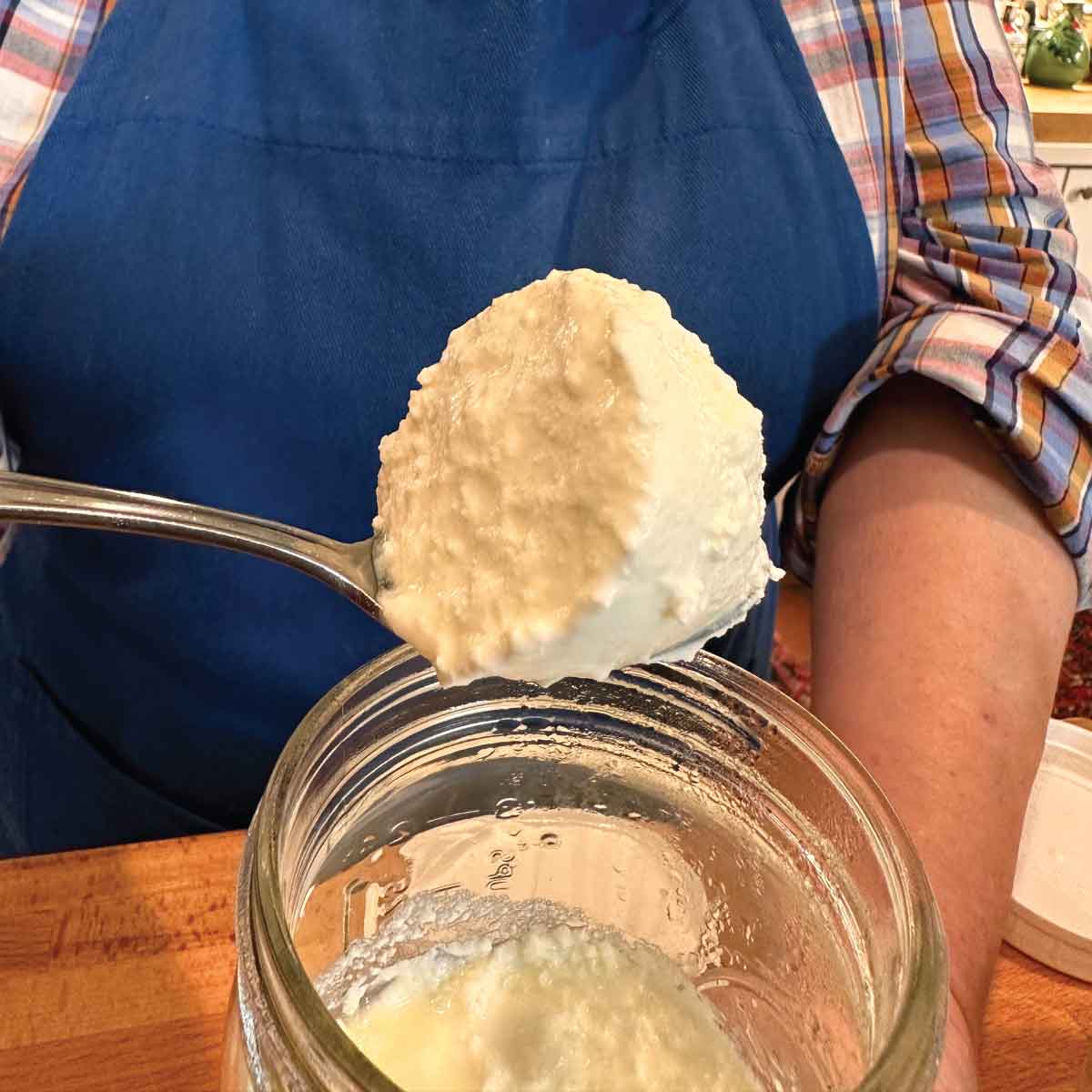
Must L. Reuteri Super Yogurt Always be Cultured at 100°F (38°C)?
When making L. Reuteri Super Yogurt, its sweet spot, so to speak, for culturing, is 100°F (38°C). But is there a little wiggle room? Yes, you can go a bit cooler and a bit warmer. But you do not want to go higher than 109°F (43°C) because this will begin to kill off the L. Reuteri, and you certainly don’t want to do that!
The good news is that since you can have a slight temperature variation, you can mix L. Reuteri with other good bacteria cultures that require slightly warmer temperatures to culture above 100°F. Dr. David shares numerous other recipes with different good bacteria combinations in his book.
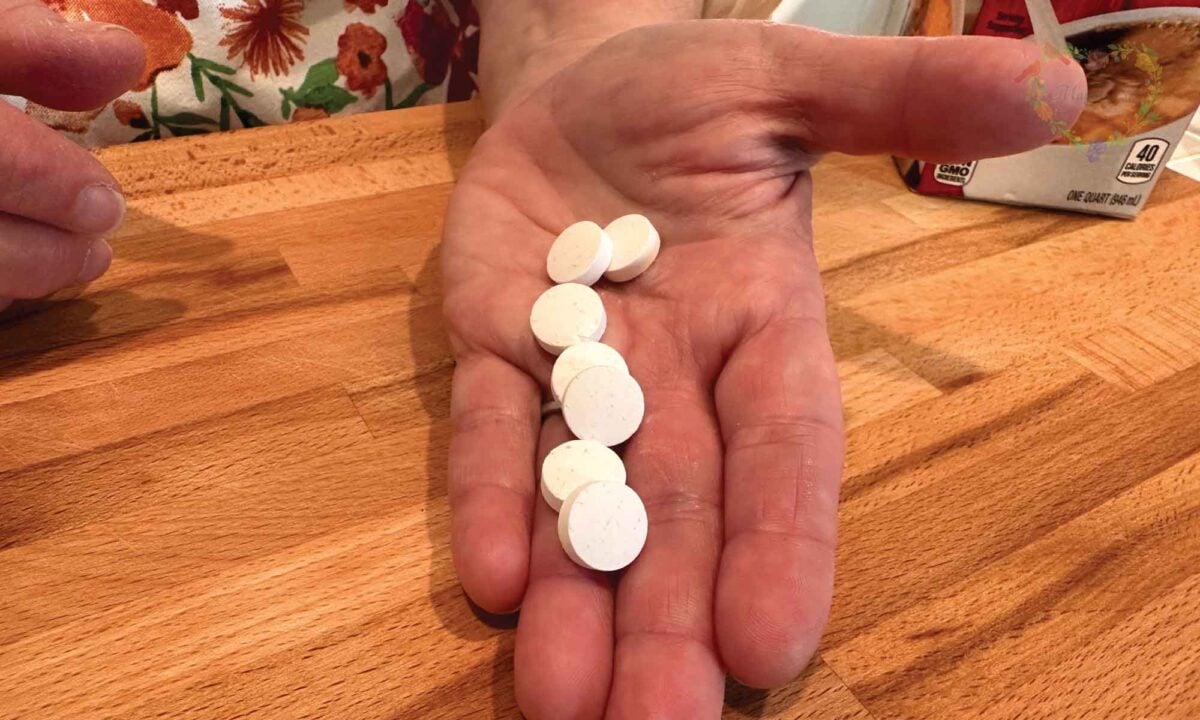
Do You Need L. Reuteri Tablets to Make Every Batch of Cultured Dairy?
When you make L. Reuteri cultured dairy for the first time, you will need to inoculate your half and half or whole milk with the L. Reuteri good bacteria. This good bacteria is sold in tablet form. I use the brand that Dr. Davis and his research team used, but there are various acceptable brands available that you can use.
I order my tablets online, but with the popularity of L. Reuteri cultured dairy, you may find them at your local grocery store in the health food aisle or at a health food store.
The good news is that you do not need to use the tablets every time you make L. Reuteri cultured dairy. You only need them to make your first batch of Super Yogurt.
Update: Dr. Davis now recommends using one capsule of his new formulation, MyReuteri, for making the perfect probiotic rich cultured dairy, what many devotee refers to as super yogurt!
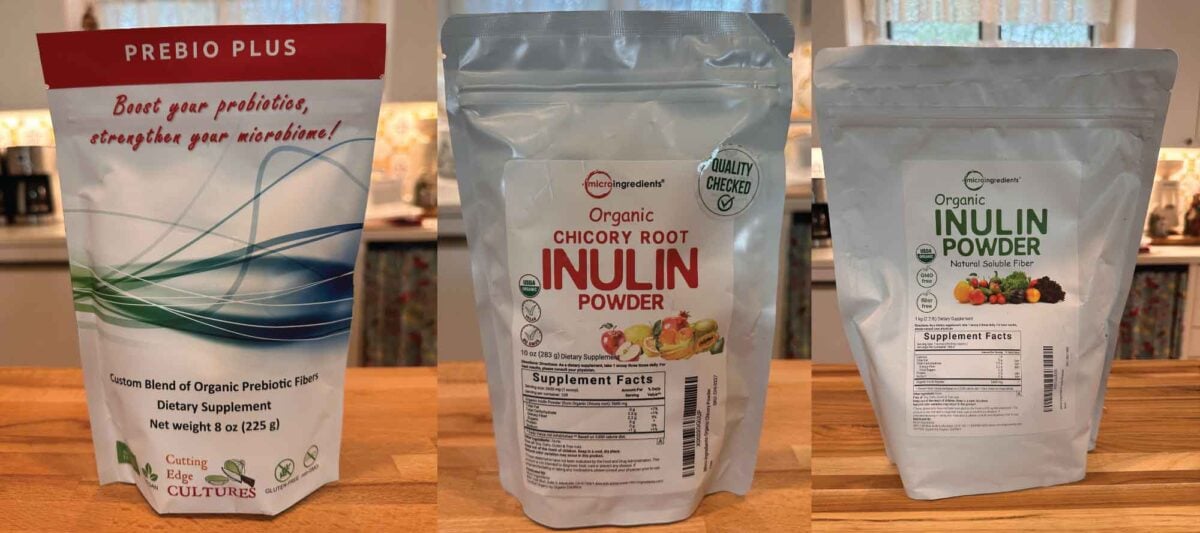
What is Inulin and Do You Always Need It When Making L. Reuteri Cultured Dairy?
When we make L. Reuteri cultured dairy, we culture it for a total of 36 hours at 100°F (38°C). We do this to allow the L. Reuteri good bacteria to proliferate significantly to make a Super Yogurt that is very high in good bacteria: probiotics.
Because of this long culturing time, we need to make sure that the L. Reuteri has plenty of food to eat. And it is the inulin that is a prebiotic. Prebiotics are food for probiotics. Inulin can be made from high-fiber foods, such as chicory or Jerusalem artichokes, and this inulin makes the perfect prebiotic food to feed the L. Reuteri good bacteria so that it can successfully proliferate and create a thick and creamy Super Yogurt.
To learn more about the importance of prebiotics, be sure to read any of the books by Donna Schwenk, all about creating successful cultured food. She is the author of the Cultured Food For Life, Cultured Food For Health, and the soon to be released Cultured Food in a Jar.
Does L. Reuteri Always Need to Be Cultured for 36 Hours?
The secret to creating a Super Yogurt rich in L. Reuteri is to culture it for a total of 36 hours. Dr. Davis and his research team discovered that when the culturing process associated with making cultured dairy hit 30 hours, something amazing happened.
At 30 hours, the level of good bacteria shot straight up like a hockey stick, leveling off at 36 hours. So yes, L. Reuteri super yogurt needs to be cultured for 36 hours to reach its full potential and create a probiotic-rich end product.
Why Did My First Batch of L. Reuteri Cultured Diary Curdle?
The first batch of L. Reuteri will appear as though it has curdled, but don’t be alarmed. This is normal. Just whisk it all back together and enjoy it. Just remember to save a few tablespoons of your first batch to use to culture your second batch. You will not need to use the tablets again. All you need is a bit of reserved L. Reuteri super yogurt, and you can create your second batch.
And for subsequent batches, don’t forget to always save a little bit of super yogurt from your previous batch since you’ll use it to inoculate your next batch!
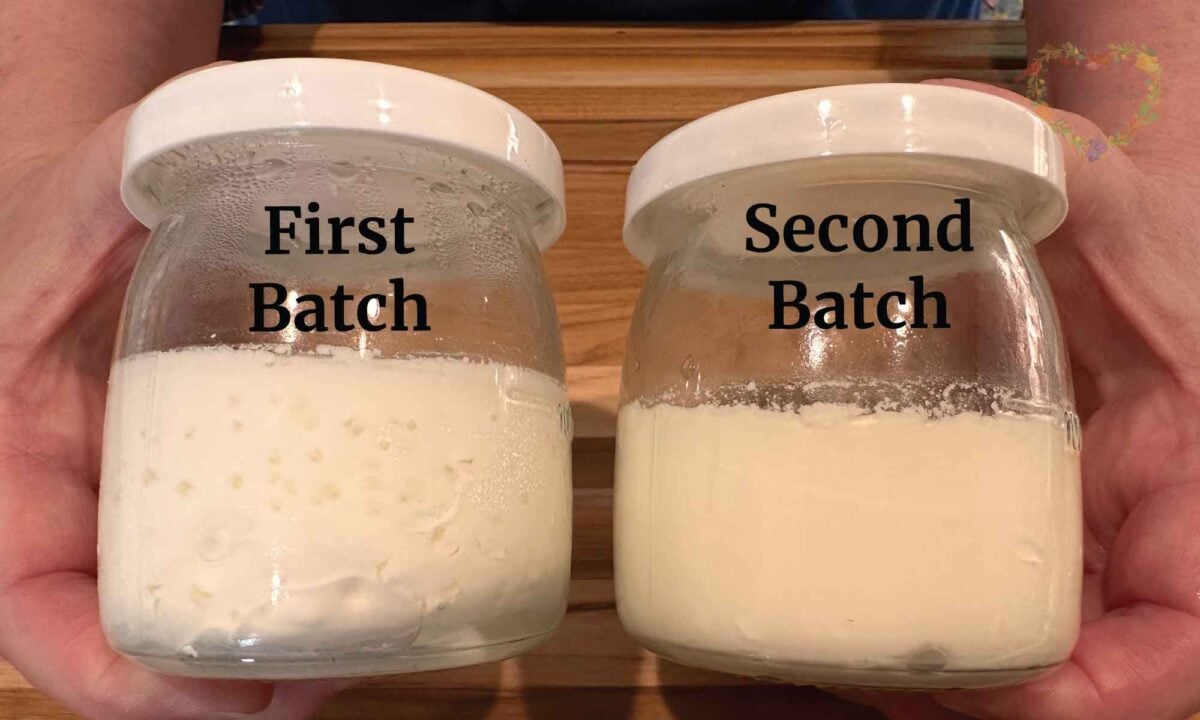
How Are the Second and Subsequent Batches of L. Reuteri Cultured Dairy Made?
As I shared above, each time you go to make a new batch of L. Reuteri cultured dairy, you will use a little bit—a few tablespoons—of your recent batch. You’ll mix a bit of your Super Yogurt with your inulin and your half and half or milk, and you’re all set to make a new batch.
And going forward, each time you make a new batch of super yogurt, you’ll follow the same process, starting with a bit of your previous batch. It couldn’t be easier!
Can You Freeze L. Reuteri Cultured Dairy?
You can freeze L. Reuteri cultured dairy. This comes in handy if you want to take a break from making it. You can freeze a little bit of it, and then when you are ready to make your L. Reuteri cultured dairy again, all you need to do is:
- Pull what you saved out of the freezer.
- Let it defrost overnight in the fridge.
- Use it the next day to inoculate your half and half or milk.
How Long Will L. Reuteri Cultured Dairy Last Once Refrigerated?
L. Reuteri cultured dairy is at its strongest during the first 10 days of being made, so it is best consumed during that time.
How Much L. Reuteri Cultured Dairy Should You Eat Every Day?
Dr. Davis generally recommends eating about a 1/2 cup of L. Reuteri cultured dairy per day. But if you are new to probiotic-rich foods, you may want to start with a 1/4 cup to allow your digestive system to adjust to it.
More L. Reuteri Questions?
If you have more questions about making L. Reuteri cultured dairy, please leave your comments below or on my L. Reuteri Question and Answers video, and I will gather them up for a future video and blog post. Here’s to happy culturing!
For updates to Dr. Davis’ Super Gut book, read How to make L. reuteri yogurt: An UPDATED step-by-step guide on his website.
Disclaimer
I am not a doctor or medical professional. If you are not feeling well, please seek professional medical attention and medicine. And if you are thinking of supplementing your treatment with home remedies, be sure to talk to your medical professional about them. It’s important that you get the medicine and treatments you need to get back to good health.
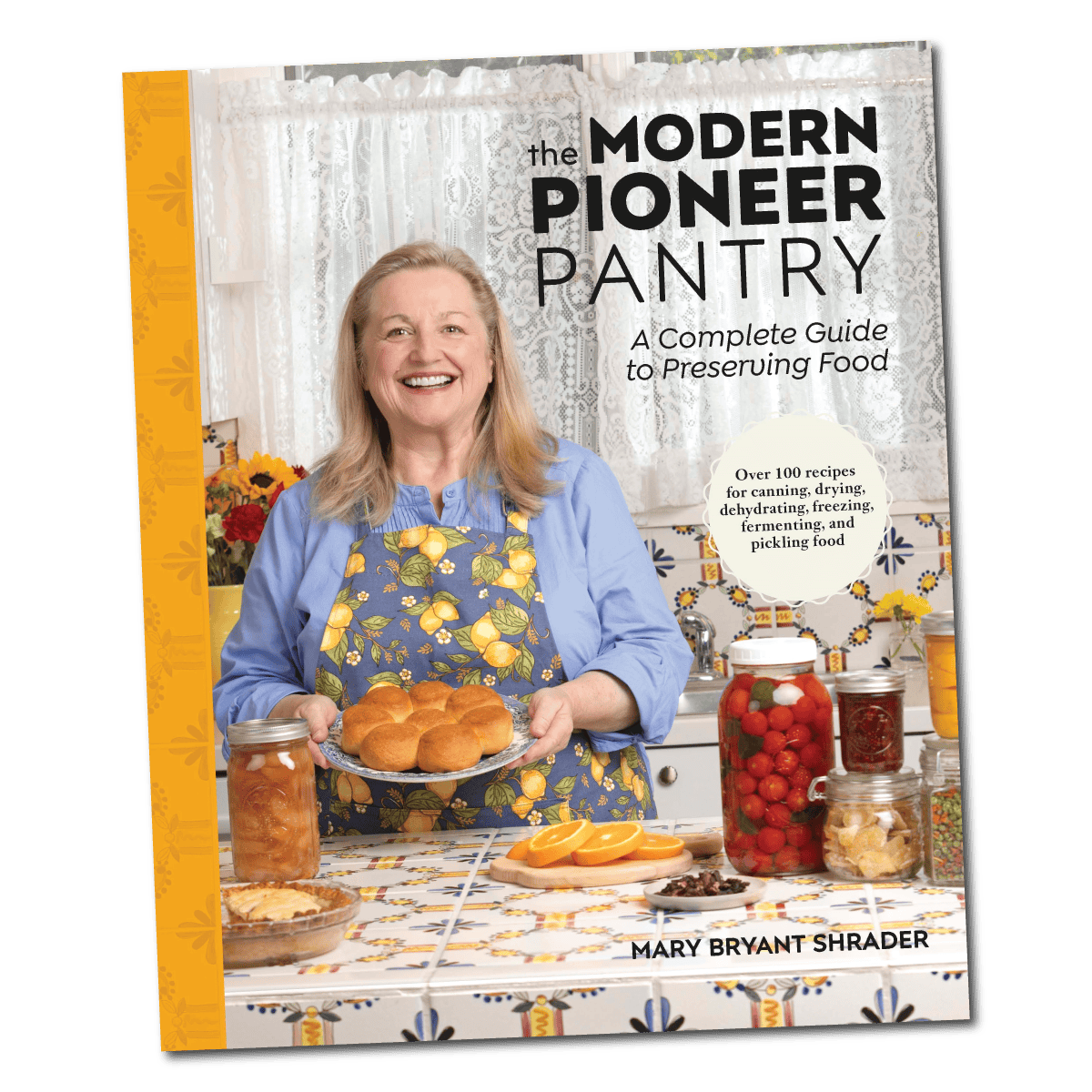
Order YOUR COPY Now!
The Modern Pioneer Pantry
Simple ingredients, timeless techniques, and a well-stocked pantry. Discover over 100 nourishing recipes to preserve food and turn pantry staples into delicious, homemade meals. Build a wholesome, traditional pantry—just like a modern pioneer!
Cultures for Health
If you’re looking for starter cultures from Milk Kefir to Cheese, see the products that Cultures for Health offers for making homemade cultured and fermented foods. And if you order from their website, be sure to use my MARYSNEST discount code for 15% off your purchase.

- Cultures for Health – Make Real Cultured Foods at Home and use discount code MARYSNEST for 15% off your purchase on the Cultures for Health website.
Download Your Free 36-Page Pantry List
For an extensive list of the traditional foods you can make and purchase to stock your pantry, be sure to download my free 36-page Traditional Foods Pantry List. This comprehensive eBook is full of links to recipe videos, helpful articles, and more!
And if you’re looking for a printed book full of my traditional foods recipes that shows you how to create a traditional foods kitchen, be sure to order your copy of my new book, The Modern Pioneer Cookbook.
Join the Traditional Foods Kitchen Academy
Are you looking for more traditional foods videos? If so, I invite you to join the Traditional Foods Kitchen Academy. Members of this optional paid YouTube community get access to exclusive videos, live streams, and other members-only perks. Plus, your YouTube comments include a special members-only badge.
Kitchen Academy Videos
How to Make Oatmeal Higher in Protein (The Old-Fashioned Way)
Turn simple oats into a hearty, protein-rich porridge.
The Only Traditional Recipes You’ll Ever Need!
Focus on traditional recipes with real food. Don’t chase trends.
Let’s Talk Akkermansia: A Tiny Helper for Big Gut Health
Discover how Akkermansia muciniphila supports gut and immune health—and how traditional foods help this mighty microbe thrive.
Stay in Touch with Mary’s Nest
- Subscribe to My YouTube Channel for Traditional Foods Videos (Free) - When you subscribe, be sure to click on the notification bell that will let you know each time I upload a new video.
- Subscribe to Mary’s Traditional Foods Newsletter (Free) - Get a free 36-page eBook for signing up: How to Stock Your Essential Traditional Foods Four-Corners Pantry.
- Join the Traditional Foods Kitchen Academy - For more detailed videos and exclusive members-only perks, join my YouTube membership community.
- Order The Modern Pioneer Cookbook - Get a hardcover book of Mary's nourishing recipes from a Traditional Foods Kitchen. This bestselling cookbook is published by Penguin Random House with their DK imprint.
- Order The Modern Pioneer Pantry - Get Mary's latest hardcover cookbook about preserving food and making delicious meals from your Four Corners Pantry. Mary's second cookbook is also published by Penguin Random House.
I look forward to having you join me in my Texas Hill Country Kitchen!
Shop for items used in this blog post or video
Favorite L. Reuteri Yogurt Making Supplies
- Favorite Aprons
- L. Reuteri tablets (Update: Dr. Davis now recommends using one capsule of his new formulation, MyReuteri for making this recipe.)
- Prebio Plus Inulin
- Jerusalem artichoke Inulin
- Chicory inulin
- 8-Quart Instant Pot Pro
- LynTorin Yogurt Maker
- Suteck Yogurt Maker
- Magic Whisk
Amazon Shop and Shopping Guide
- Visit Mary’s Nest Amazon Shop
- Visit my Shopping Guide page
Get up to 15% off for stocking your Traditional Foods Pantry and equipping your Modern Pioneer Kitchen, including discounts from US Wellness Meats, Farmhouse Teas, Backwoods Home, Masontops, Cultures for Health, Survival Garden Seeds, Redmond Real Salt, Mother Earth News, and More!
Recommended Reading
- The Modern Pioneer Cookbook
- The Modern Pioneer Pantry
- Nourishing Traditions
- Super Gut
- Cultured Food for Life
- Cultured Food for Health
Disclaimer:I am not a medical doctor, a medical professional, a dietician, or a nutritionist. All content found on the MarysNest.com website, including text, images, videos, eBooks or eGuides, social media, or other formats, were created solely for informational purposes only. The content is not intended to be a substitute for professional medical advice, diagnosis, or treatment. Always seek the advice of your physician or other qualified healthcare provider with any questions you may have regarding a medical condition or proper nutritional advice. Never disregard professional medical advice or delay in seeking it because of something you have watched in a video or read on this website. Use caution when following the recipe in this video. The creator and publisher of this video and website will not be held responsible for any adverse effects that may arise from the use of this recipe and method or any other recipe and method on this website or corresponding video channel.



